The Glucocorticoid Receptor: Isoforms, Functions, and Contribution to Glucocorticoid Sensitivity

Glucocorticoids exert pleiotropic effects on all tissues to regulate cellular and metabolic homeostasis. Synthetic forms are used therapeutically in a wide range of conditions for their anti-inflammatory benefits, at the cost of dose and duration-dependent side effects. Significant variability occurs between tissues, disease states, and individuals with regard to both the beneficial and deleterious effects.
Why Publish with the Endocrine Society Journals?
Our top-ranked peer-reviewed journals are among the first to publish major developments and discovery milestones in endocrinology. Find out more about the benefits of publishing in our high-profile, highly cited, and widely read journals.


Join the DocMatter Community
Discover the Endocrine Society DocMatter Community, a digital space designed to help you cut down on the time and effort it takes to educate, collaborate, and learn from your peers.

Meet the Editorial Team
Professor Ashley Grossman, Editor-in-Chief, and Dr. E. Dale Abel, Deputy Editor, lead the Endocrine Reviews Editorial Team. Learn more about the broad global perspective and expertise of the Editorial Team.
View the full Editorial Board

How to Submit an Article Plan
Endocrine Reviews publishes comprehensive, authoritative, and timely review articles in all areas of experimental and clinical endocrinology. Article plans for manuscripts may be invited, or an article plan may be submitted by interested individuals.

Highly Cited Articles
Explore a selection of highly cited articles making an impact in the research community. All articles are freely available for you to download, read, and enjoy.

Professionally Prepared Illustrations
Endocrine Reviews articles include professionally-prepared illustrations and graphical abstracts that can be used for presentations and teaching.

Recommend to your library
Fill out our simple online form to recommend Endocrine Reviews to your library.
Author Resource Center
The Endocrine Society provides its journal authors with a variety of tools and tips for increasing the discoverability and citation of their published work.
Preparing to submit? We work with American Journal Experts to provide editing, formatting, translation, and figure preparation services.

ORCiD
All submitting authors are required to provide an ORCiD (Open Researcher and Contributor ID) when uploading a manuscript. An author identification registry, ORCiD allows you to be uniquely identified with your work by eliminating name ambiguity. Register for free today!


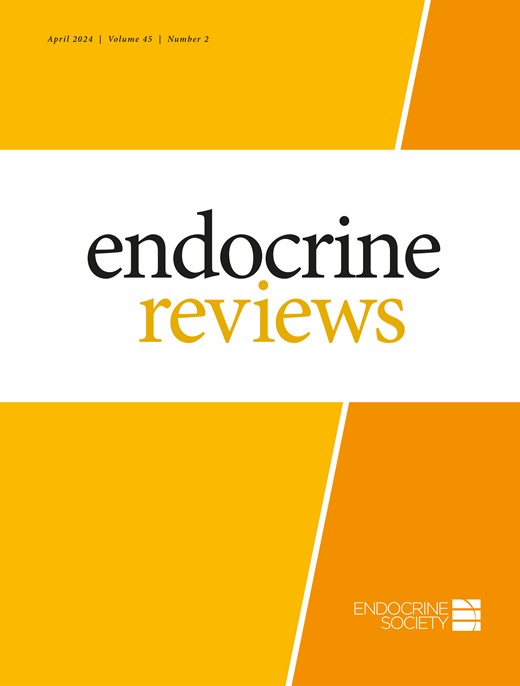
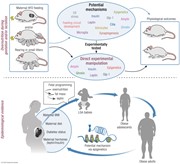 This review analyzes the published evidence regarding maternal factors that influence the developmental programming of long-term adiposity in humans and animals via the central nervous system (CNS). We describe the physiological outcomes of perinatal underfeeding and overfeeding and explore potential mechanisms that may ...
This review analyzes the published evidence regarding maternal factors that influence the developmental programming of long-term adiposity in humans and animals via the central nervous system (CNS). We describe the physiological outcomes of perinatal underfeeding and overfeeding and explore potential mechanisms that may ...
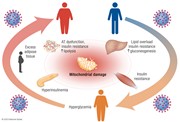 Obesity, diabetes mellitus (mostly type 2), and COVID-19 show mutual interactions because they are not only risk factors for both acute and chronic COVID-19 manifestations, but also because COVID-19 alters energy metabolism. Such metabolic alterations can lead to dysglycemia and long-lasting effects. Thus, the COVID-19 ...
Obesity, diabetes mellitus (mostly type 2), and COVID-19 show mutual interactions because they are not only risk factors for both acute and chronic COVID-19 manifestations, but also because COVID-19 alters energy metabolism. Such metabolic alterations can lead to dysglycemia and long-lasting effects. Thus, the COVID-19 ...
 Chronic complications of diabetes are due to myriad disorders of numerous metabolic pathways that are responsible for most of the morbidity and mortality associated with the disease. Traditionally, diabetes complications are divided into those of microvascular and macrovascular origin. We suggest revising this antiquated ...
Chronic complications of diabetes are due to myriad disorders of numerous metabolic pathways that are responsible for most of the morbidity and mortality associated with the disease. Traditionally, diabetes complications are divided into those of microvascular and macrovascular origin. We suggest revising this antiquated ...
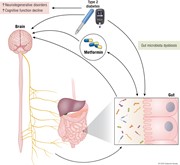 The decline in cognitive function and the prevalence of neurodegenerative disorders are among the most serious threats to health in old age. The prevalence of dementia has reached 50 million people worldwide and has become a major public health problem. The causes of age-related cognitive impairment are multiple, complex, ...
The decline in cognitive function and the prevalence of neurodegenerative disorders are among the most serious threats to health in old age. The prevalence of dementia has reached 50 million people worldwide and has become a major public health problem. The causes of age-related cognitive impairment are multiple, complex, ...
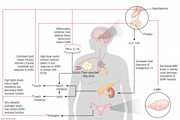 Obesity-related hypogonadotropic hypogonadism is a well-characterized condition in men (termed male obesity-related secondary hypogonadism; MOSH); however, an equivalent condition has not been as clearly described in women. The prevalence of polycystic ovary syndrome (PCOS) is known to increase with obesity, but PCOS is ...
Obesity-related hypogonadotropic hypogonadism is a well-characterized condition in men (termed male obesity-related secondary hypogonadism; MOSH); however, an equivalent condition has not been as clearly described in women. The prevalence of polycystic ovary syndrome (PCOS) is known to increase with obesity, but PCOS is ...
 Over the past 4 decades, the clinical care of people living with HIV (PLWH) evolved from treatment of acute opportunistic infections to the management of chronic, noncommunicable comorbidities. Concurrently, our understanding of adipose tissue function matured to acknowledge its important endocrine contributions to energy ...
Over the past 4 decades, the clinical care of people living with HIV (PLWH) evolved from treatment of acute opportunistic infections to the management of chronic, noncommunicable comorbidities. Concurrently, our understanding of adipose tissue function matured to acknowledge its important endocrine contributions to energy ...
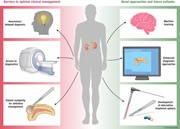 Primary aldosteronism (PA) is the most common cause of secondary hypertension and is associated with increased morbidity and mortality when compared with blood pressure–matched cases of primary hypertension. Current limitations in patient care stem from delayed recognition of the condition, limited access to key diagnostic ...
Primary aldosteronism (PA) is the most common cause of secondary hypertension and is associated with increased morbidity and mortality when compared with blood pressure–matched cases of primary hypertension. Current limitations in patient care stem from delayed recognition of the condition, limited access to key diagnostic ...
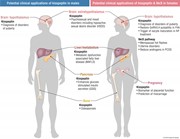 Kisspeptin (KP) and neurokinin B (NKB) are neuropeptides that govern the reproductive endocrine axis through regulating hypothalamic gonadotropin-releasing hormone (GnRH) neuronal activity and pulsatile GnRH secretion. Their critical role in reproductive health was first identified after inactivating variants in genes ...
Kisspeptin (KP) and neurokinin B (NKB) are neuropeptides that govern the reproductive endocrine axis through regulating hypothalamic gonadotropin-releasing hormone (GnRH) neuronal activity and pulsatile GnRH secretion. Their critical role in reproductive health was first identified after inactivating variants in genes ...
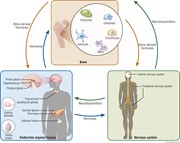 The homeostasis of bone microenvironment is the foundation of bone health and comprises 2 concerted events: bone formation by osteoblasts and bone resorption by osteoclasts. In the early 21st century, leptin, an adipocytes-derived hormone, was found to affect bone homeostasis through hypothalamic relay and the sympathetic ...
The homeostasis of bone microenvironment is the foundation of bone health and comprises 2 concerted events: bone formation by osteoblasts and bone resorption by osteoclasts. In the early 21st century, leptin, an adipocytes-derived hormone, was found to affect bone homeostasis through hypothalamic relay and the sympathetic ...
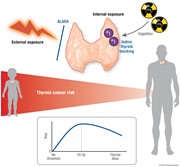 Radiation is an environmental factor that elevates the risk of developing thyroid cancer. Actual and possible scenarios of exposures to external and internal radiation are multiple and diverse. This article reviews radiation doses to the thyroid and corresponding cancer risks due to planned, existing, and emergency ...
Radiation is an environmental factor that elevates the risk of developing thyroid cancer. Actual and possible scenarios of exposures to external and internal radiation are multiple and diverse. This article reviews radiation doses to the thyroid and corresponding cancer risks due to planned, existing, and emergency ...



